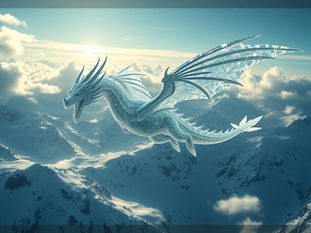
How to Generate the Same Character in AI Images Every Time
May 1
5 min read
0
100
0

Creating unique characters with AI tools like Midjourney is exciting. But getting that character to show up consistently in different scenes and poses? That's often very difficult. You might get results that are close, but not quite right. This post shows you a powerful method to solve this problem and create photo-realistic images of your specific character, again and again.
The Challenge of AI Character Consistency
When you ask an AI to create a character based on a photo, it often generates someone similar but different. Look at this example from Midjourney. It used a photo as a character reference, and while the result was okay, it wasn't an exact match for the person.
There are different AI tools you can use for creating consistent characters. Some are easy to use, others are more complex. Some are so advanced they can be confusing. Let's look at results from three popular methods and compare them.
Comparing AI Character Methods
Here are results from three different approaches using the same subject, Jagger, from the Curious Refuge team:
Method 1: Midjourney. The image is high quality and cinematic, but it doesn't really look like Jagger. It's a good image, but fails at the consistent character goal.
Method 2: Freepik. This definitely captures Jagger's likeness. However, the overall look feels flat, like stock photography. There are also strange details, like an excessive number of water cups in the background scene. The composition and lighting lack realism.
Method 3: Using a Custom Model on Fall AI. This image clearly shows Jagger. The results are realistic and cinematic. This method delivers both character consistency and high image quality.
The core issue with standard tools is their inability to reliably reproduce the exact same likeness. This is where more advanced techniques, specifically training a custom model, provide a significant advantage. For photographers, filmmakers, or marketers who need reliable character generation, a streamlined workflow is essential. Tools designed for automation, like the Midjourney Automation Suite from TitanXT, can significantly improve your production process, though they leverage different techniques than the custom model method shown here. Automating prompt variation and generation can save you immense time when exploring different looks for a character, even if perfect consistency requires specialized training pipelines.
Creating a Custom Character Model with Fall AI
Using Fall AI allows you to access powerful image generation workflows, similar to tools professionals use, but without needing deep technical knowledge. Here's how to create a custom model of your subject.
Train Your Model
1. Go to the Fall AI website (fall.ai).
2. Find and select a model like 'flux Laura fast training.'
3. Collect images of your subject. Variety is key! Use images from different angles, lighting conditions, and poses. The more variety, the better the AI will capture the subject in different styles later. Aim for at least 10 images; more is better.
4. Drag and drop your collected images into the training area.
5. Set a unique 'trigger word' for your subject. This will be the word you use in prompts later. Use the subject's name, like 'Jagger.' Don't select 'is style' unless you are training on a drawing style, not a person.
6. Click 'more,' make sure 'create mask' is selected, and set steps to 1000.
7. Click 'Start.'
The training takes about 5 to 10 minutes, depending on the number of images. Once finished, you will see file download options. Be sure to download or copy the link to the 'diffuser Laura file.' This is your custom character model. Keep the link saved somewhere safe.
Generate Images Using Your Model
1. After training, click 'Run Inference.' This opens the image generation tool with your custom model ready to use (often called 'flux Dev with Laura').
2. Write your prompt. Start simple, e.g., "an editorial photo of Jagger in a coffee shop." You can add more details later about style, lighting, and camera settings to get cinematic results.
3. In the 'path' box, paste the link to your Laura model file that you saved earlier. Set the scale to 1. You can add more Laura models here if you want to combine concepts, like a subject and a specific artistic style, but combining too many can get unpredictable.
4. Click 'more' to see advanced settings.
5. Choose your image size, like 'landscape.' Keep inference steps at the default (28) and guidance scale at 3.5 to start. You can adjust these after seeing the first results.
6. Set the number of images you want to generate. Generating 4 images at once gives you more options to choose from.
7. Click 'Run.'
After a few seconds, you get your generated images. The results should show your subject consistently in the scene described by the prompt. Note that details like clothing or hairstyles might change unless you specifically prompt for them. The AI places your specific character into the scene.
This method provides far better character consistency than standard prompting in Midjourney. For those managing large-scale AI image projects, exploring solutions that can handle repetitive tasks or variations efficiently is key. The Midjourney Automation Suite from TitanXT is built to streamline your workflow, allowing you to focus more on creative direction and less on manual execution.
Upscaling Your Final Image
AI-generated images often come in lower resolutions, like 1024x576. For professional use, like printing or integrating into video, you need a higher resolution. Upscaling increases the size and detail of the image.
Using Gigapixel for Upscaling
There are various upscaling tools available, including online options and open-source tools. However, Gigapixel by Topaz Labs is a very effective and professional option.
1. Drag and drop your chosen low-resolution image into Gigapixel.
2. Select a higher scale factor, such as 'times six,' to make the image much larger.
3. Choose 'High Fidelity' for better resolution.
4. In settings, generally keep details like 'fix compression,' 'deblur,' and 'denoise' turned down or off to keep the original image's desired look.
5. Avoid selecting 'face recovery.' While it can add detail, it often makes faces look artificial or 'plastic,' which is usually undesirable.
Gigapixel adds incredible detail that wasn't visible before. You'll see skin texture, individual hair strands, and fabric details appear clearly when you zoom in on the upscaled image. This step transforms a small image into a professional-grade asset.
Once you are happy with the result, click 'Save Image'.
Conclusion
Generating consistent, realistic characters with AI requires moving beyond basic prompting. By training a custom model using a tool like Fall AI and then upscaling the results with software like Gigapixel, you can achieve professional-quality images of your specific character in any scene you imagine.
This combination of custom model training and high-quality upscaling provides the control and consistency needed for film projects, marketing materials, and more. To further enhance your AI image generation workflow, especially when managing multiple prompts and variations, consider integrating automation tools into your process. The Midjourney Automation Suite from TitanXT offers powerful features to streamline your production.






